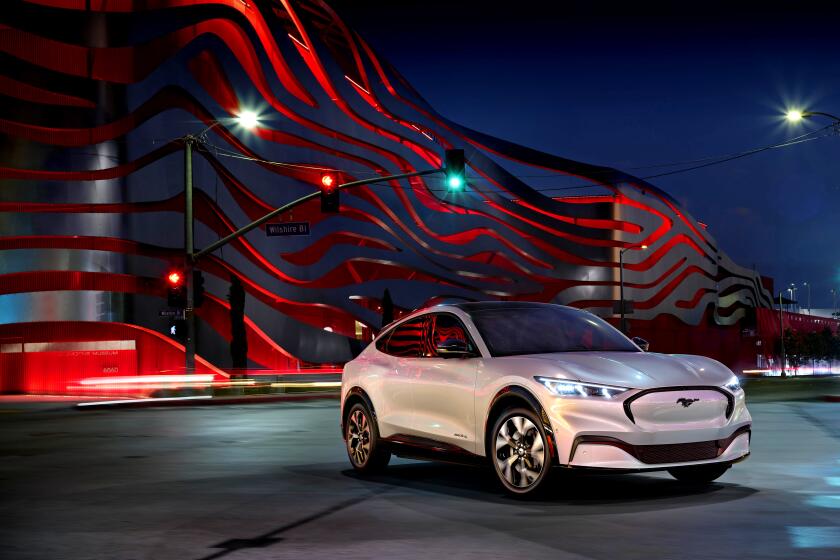Electric vehicles beat gasoline cars in cradle-to-grave emissions study
A cradle-to-grave analysis finds driving an electric car in California creates less greenhouse gas emissions than even the most efficient gasoline vehicle.
A car running on electricity -- even when powerplant emissions are considered -- produces pollution equivalent to a theoretical conventional car with fuel economy of 87 miles per gallon, according to the study, released Thursday by the Union of Concerned Scientists.
The organization tallied all the greenhouse gas emissions from every aspect of auto manufacturing and operations and found that electric vehicles beat their gasoline counterparts in every region of the U.S.
SIGN UP for the free California Inc. business newsletter >>
They did best -- putting out the pollution of a gas vehicle that gets 135 mpg -- in upstate New York, which is rich with renewable energy resources.
Electric cars offered the least pollution reduction -- the equivalent of a 35 to 36 mpg car -- in the central U.S., states such as Colorado, Kansas and Missouri, because so much of the electricity in that region comes from fossil fuels such as coal.
“Although a battery electric vehicle has no tailpipe emissions, the total global warming emissions from operating it are not insignificant; they depend on the sources of the electricity that charge the vehicle’s batteries and on the efficiency of the vehicle,” said Rachael Nealer, a UCS scientist and the report’s author.
Nationally, electric cars produce less than half the global warming emissions of comparable gasoline-powered vehicles, even when factoring in the extra pollution over internal combustion vehicles produced manufacturing the cars -- mainly from the production of the big lithium-ion battery packs, the study said.
Nealer said the study demonstrates that electric vehicles will be essential to achieving the deep emissions reductions by mid-century needed to avoid the worst effects of climate change.
Consumers can compare the emissions profiles of electric cars and plug-in hybrids by model and Zip Code on this online tool.
Nealer’s report examined emissions from automobile and battery manufacturing and other factors such as how electricity is made and how much gets used up in the transmission to factories and electric cars.
The report took into account emissions that come from oil extraction, refining and transportation to gas stations.
Nealer relied on data produced by the Department of Energy, the Environmental Protection Agency, the Argonne National Laboratory and from auto manufacturers.
“This compares the total life cycle of an electric and a similar gasoline vehicle,” Nealer said.
The scientific group based its modeling on the Nissan Leaf and Tesla Model S -- the two bestselling electric cars in the U.S. Each has a different greenhouse gas emissions profile because of their batteries.
The bigger the battery, the more pollution results from its production. That’s why the smaller Nissan -- which also has less than half the range of a Tesla -- offsets its excess manufacturing emissions in about 4,900 miles, or six months of driving. The Tesla offset comes within 19,000 miles, or 16 months of operation.
Nealer expects the emissions profile of electric cars to continue to improve over their gasoline counterparts as technology advances and electricity generation becomes cleaner.
“It is really impressive how much cleaner electric cars have become in just the last three years,” she said.
For more automotive news, follow me on Twitter (@LATimesJerry) and Facebook.
ALSO:
Does VW ‘goodwill’ payment clause prevent owners from suing?
Automakers struggle to bring affordable diesel cars to U.S. market
Spare us, automakers. They’re removing trunk tires in more new car models







